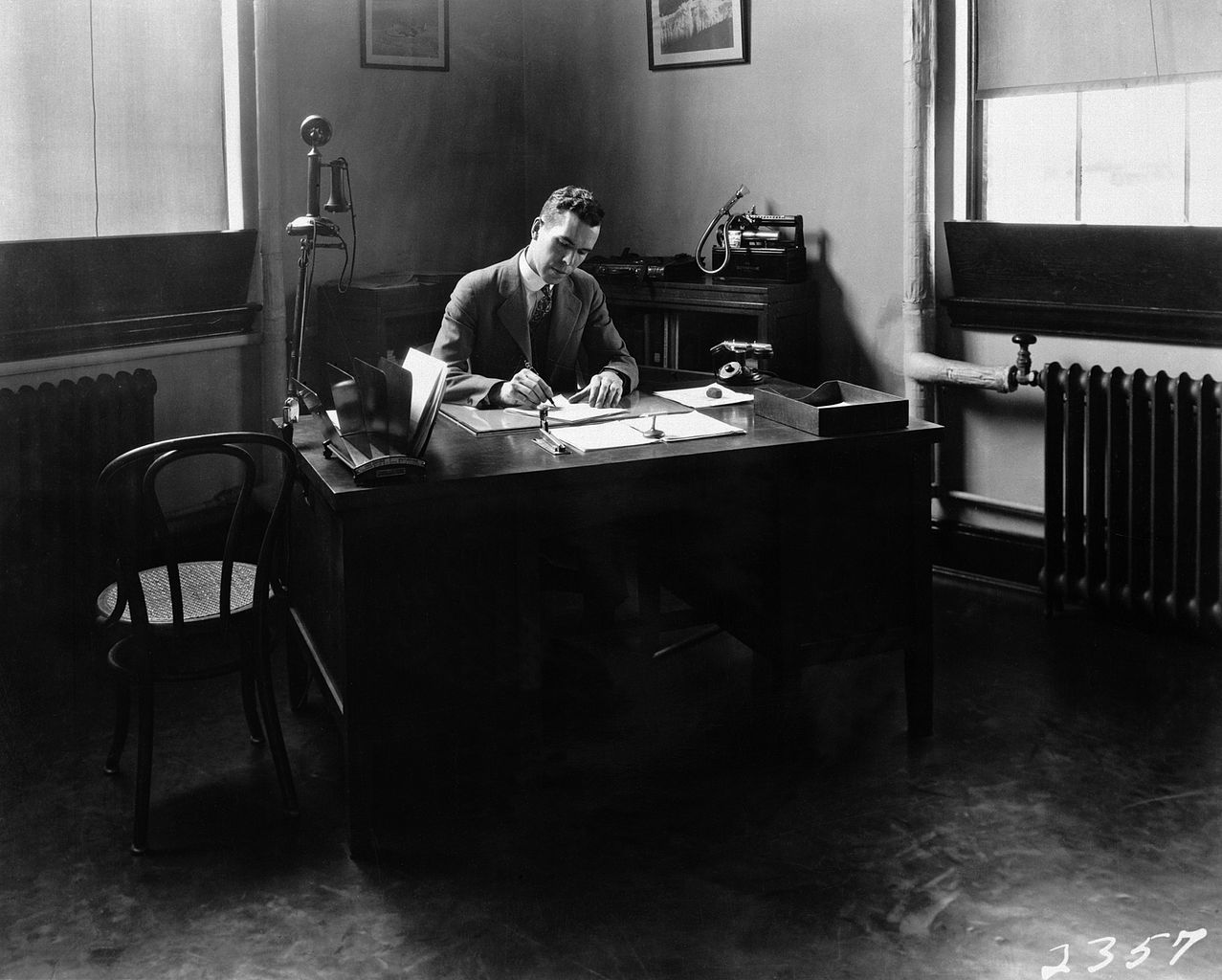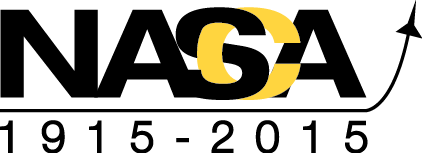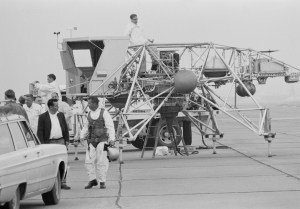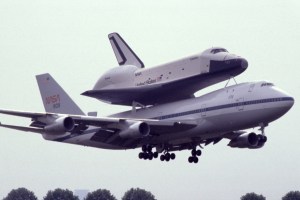
The Langley Memorial Aeronautical Laboratory grew out of Virginia marshland to become a world-renowned aeronautical research facility. The site was chosen for its four-season climate, location near water transportation, and a local skilled workforce knowledgeable mainly in the shipbuilding trades, with skills that readily applied to the new field of aviation.
Engineers and scientists came from across the country to work at the nation’s first civilian aeronautical research center. The new laboratory was led by an engineer-in-charge, a position first held by Leigh Griffith, a mechanical engineer educated at the California Institute of Technology. In 1925, Henry J.E. Reid, who was 29 years old at the time, became the engineer-in-charge and remained in that position throughout the NACA years. An electrical engineer educated at Worcester Polytechnic Institute, he led Langley research from the age of biplanes to the beginning of the space age. Research areas, programs, and projects were approved and funded by the National Advisory Committee for Aeronautics (NACA) and its system of subject-specific subcommittees through research authorizations. The NACA research authorizations files, which are housed at Langley, contain correspondence, funding, preliminary results, suggested related investigations and the final technical report for each funded research investigation.
From the Center’s first wind tunnel, a copy of a British design, the researchers at Langley endeavored to design and construct more accurate and specialized wind tunnels. Langley researchers and scientists advanced not only the technology of flight, but also the tools to study that technology. Publishing their results in technical reports, the accuracy of their data drew visitors from around the world.

Construction started at Langley in 1917 for an NACA administration building and a wind tunnel on land carved out of an allocation for an Army Air Corps proving ground. Dedicated in 1920, the Langley Memorial Aeronautical Laboratory (LMAL) was named to honor Dr. Samuel P. Langley, an aviation pioneer and former head of the Smithsonian Institute.
Not satisfied with the results from the first LMAL wind tunnel, the staff set about designing a more accurate tunnel. Dr. Max Munk, theorized that a tunnel in which the air density could be varied to the scale of the models tested in it would provide results that more accurately modeled full-scale fight in air. The Variable Density Tunnel (VDT), LAML’s second wind tunnel, which was Munk’s theory put to practical use, was designed as a pressure vessel with an open return tunnel inside. It was built at Newport News Shipbuilding, located in a city bordering Hampton, loaded on a barge and installed at LMAL in 1922. A research group headed by Eastman Jacobs was assign to the VDT. Eastman’s group conducted several series of airfoil tests. The results, published in NACA technical reports, were used by aircraft designers to select wing shapes. The airfoil research in the VDT helped to establish LMAL’s reputation for accurate usable research results. The VDT is now a National Historic Landmark and is part of an outdoor exhibit at Langley Research Center.
Max Munk and Elton Miller next turned their attentions to a larger wind tunnel. Completed in 1927, The Propeller Research Tunnel (PRT) had a 20-ft test section capable of holding full-scale aircraft, minus their wings and was built to understand the complex airflow around propellers and aircraft fuselages. Research in the PRT resulted in the NACA cowling or engine cover that reduced drag across radial aircraft engines while increasing engine-cooling airflow around the engine. The result was an increase in airspeed for every aircraft that used engine cowlings over the same aircraft without cowlings. Langley received its first Collier Trophy, awarded annually for the most significant applied aviation innovation, in 1929 for the cowling.
In 1928, LMAL engineers Smith DeFrance, Abe Silverstein, and Clint Dearborn were assigned to design a tunnel that could test full-scale aircraft. When completed in 1931, the Full Scale Tunnel had a 30-ft by 60-ft test section. During World War II, the Full Scale Tunnel tested every U.S. fighter aircraft design and many bomber aircraft designs in a series of tests called drag clean-up, which closely examined airflow around the aircraft, documented areas of high drag, and recommended design changes to improved performance. During the war effort, multiple shifts worked six days a week to keep up with demand for tunnel time.
Langley staff went on to design two Spin Tunnels, first with a 15-ft diameter test section, built in 1934 and then an improved design with a 20-ft test section, built in 1941. The 20-ft Spin Tunnel, still in operation today, like its predecessor, provides a greater understanding of the spin characteristics of aircraft so that aircraft designs can be modified or procedures developed to mitigate the deadly effects of spin in flight.
As Europe became entangled in the events that resulted in World War II, the NACA advised Congress on the need for more research labs, tunnels, and staff at LMAL as well as the need for two additional research facilities to keep the nation on the technological edge in aviation. In 1939, the NACA was authorized to build a second facility at Moffett Field, which was owned by the Navy. A group of LMAL employees went to Moffett Field under the direction of Smith DeFrance to design and supervise the building of what became Ames Aeronautical Laboratory.
The following year a third research facility was approved. The LMAL Power Plants Division was to be built at a site near Cleveland Airport, initially called the Aircraft Engine Research Laboratory, later known as Lewis Flight Propulsion Laboratory and today known as Glenn Research Center.
After World War II, as aircraft speeds increased, aeronautics researchers were presented with the challenge of understanding the physics of transonic flow, the air speed region just under, at, and just over the speed of sound. Wind tunnel designs of the time were not providing results that correlated with aircraft in actual flight were experiencing. Henry Wright and John Stack developed an idea for cutting slots in a wind tunnel test section to reduce the effects of tunnel walls on the increased airflow speed. Applied first to the 16-ft Transonic Tunnel and then to the 8-Ft High Speed tunnel, the concept was a success. John Stack and his team received a Collier Trophy in 1951 for the concept.
NACA LMAL staff received recognition for other accomplishments. In 1947, John Stack received the Collier Trophy along with Chuck Yeager and Lawrence Bell. Stack’s team studied the Bell X-1 in wind tunnels prior to Chuck Yeager’s historic flight that broke the sound barrier. In 1954, Richard Whitcomb received a Collier Trophy for his concept known as the Area Rule. As aircraft approached the speed of sound, drag increased and reduced aircraft speed. The increased drag and reduced aircraft speed confounded aircraft designers, who tried ever more powerful engines with disappointing results. While contemplating the problem, Whitcomb envisioned narrowing the fuselage where the wings were joined so that the cross section of the aircraft was relatively equal along the entire aircraft. Wind tunnel tests proved the concept, which is visible on high-speed aircraft today.
Concurrent with ideas to improve wind tunnel design to increase understanding of transonic and supersonic flight, Langley researchers looked for other methods of understanding this flight regime. Research pilots flew aircraft in steep dives with tiny, instrumented half models affixed to their aircraft’s wings. At a certain point in the dive, flow over the tiny model would become transonic.
A second method was developed in an effort to understand rocket-powered flight and to learn more about high-speed flight. A new research division was formed. Known as the Pilotless Aircraft Research Division (PARD), its focus was the study of flight using rockets with instrumented scale models attached. Making the trip to Virginia’s Eastern Shore to a former Navy facility on Wallops Island, the PARD would launch its models out over the Atlantic Ocean. Eventually known as the Wallops Flight Facility, it proved to be an excellent site for the PARD staff to gain experience with rocket launches and data telemetry. Many members of PARD, including Robert Gilruth and Chris Kraft, would form the nucleus of the Space Task Group. At the dawn of the Space Age, The Space Task Group formulated the nation’s first human in space program, Project Mercury, as well as the Gemini and Apollo programs. The Space Task group eventually moved to Houston, Texas, as the Manned Spaceflight Center, later known as Johnson Space Center.
Reflecting on the accomplishments of the researchers of the National Advisory Committee for Aeronautics as we approach the centennial of its creation, one can find the foundation for the accomplishments of the National Aeronautics and Space Administration. Although the aircraft and now spacecraft look very different from the airplanes of 1915, and computers are used to run and collect data from today’s wind tunnels, as well as provide insight to air flow around test models, the push for understanding and innovation that was found at the NACA is alive today at NASA.
References
Cave of the Winds: The Remarkable History of the Langley Full-Scale Wind Tunnel by Joseph Chambers
Langley Cultural Resources website: http://crgis.ndc.nasa.gov/historic/Larc
Further Reading
Author: Gail Langevin































